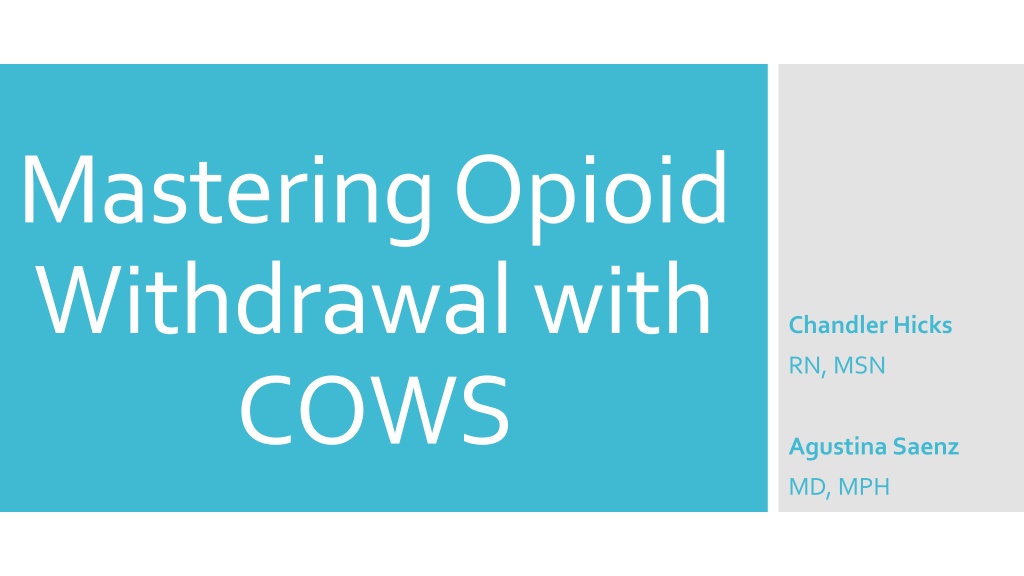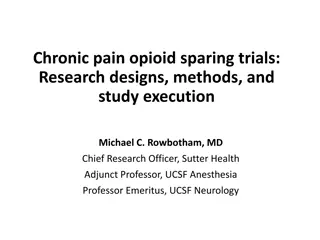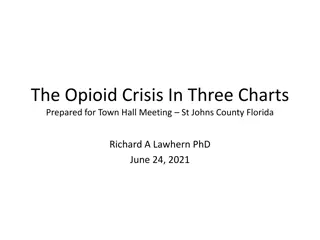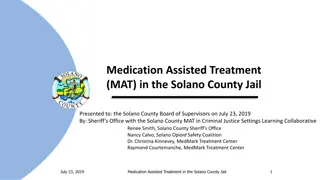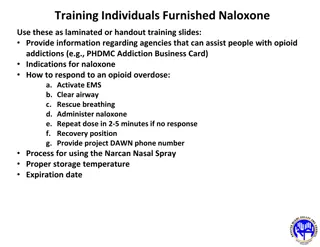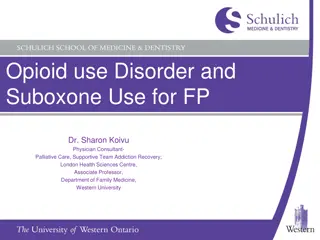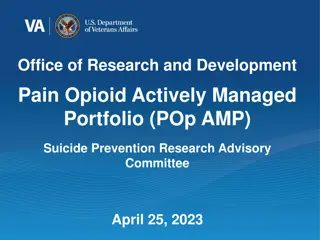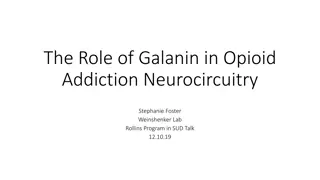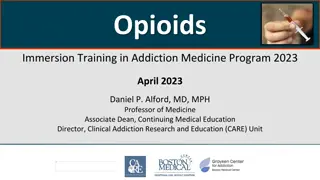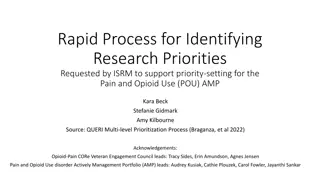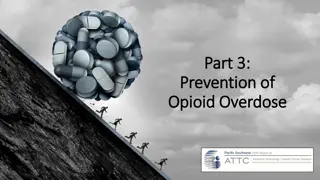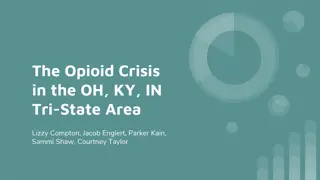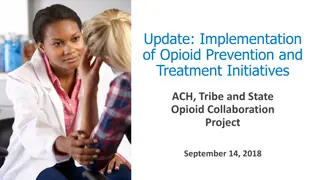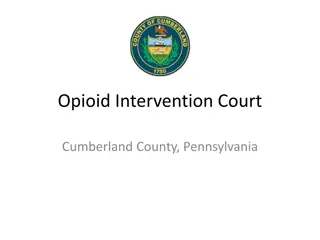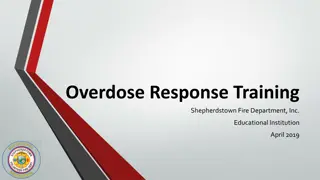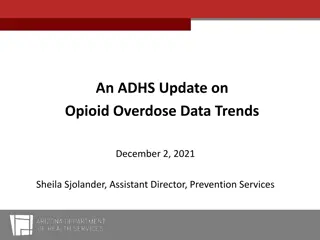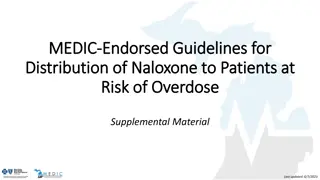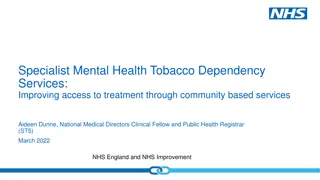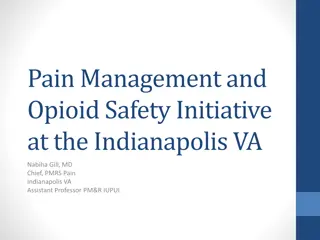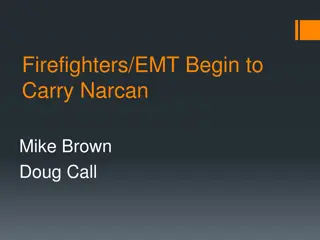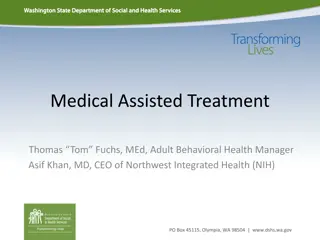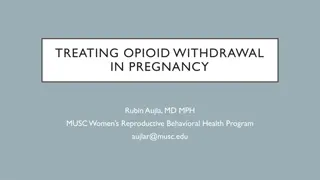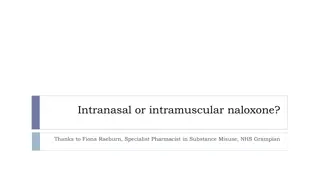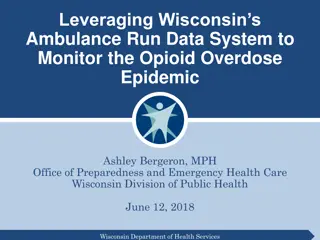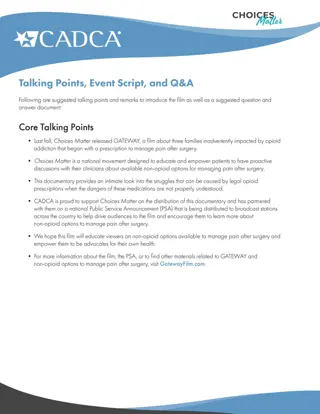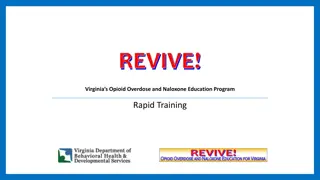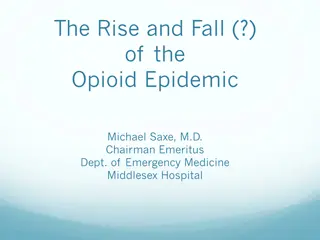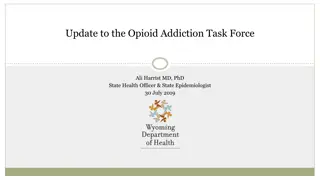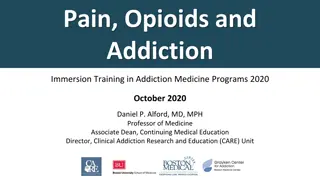Case Studies on Opioid Dependency and Management
Two cases of patients dealing with opioid use disorder are presented in a hospital setting, highlighting challenges in pain management and patient behavior. The first case involves a female patient with chronic pain following surgery, while the second case features a male patient with a history of substance use disorder. Both cases showcase the complexities of managing pain, addiction, and patient expectations in healthcare settings.
Download Presentation

Please find below an Image/Link to download the presentation.
The content on the website is provided AS IS for your information and personal use only. It may not be sold, licensed, or shared on other websites without obtaining consent from the author. Download presentation by click this link. If you encounter any issues during the download, it is possible that the publisher has removed the file from their server.
E N D
Presentation Transcript
Mastering Opioid Withdrawal with COWS Chandler Hicks RN, MSN Agustina Saenz MD, MPH
Question 1:What percentage of patients on the 14th floor are on opioids on any given day? a. 20 - 30% b. 40 50% c. 10 - 20% d. 30 - 40%
Question 1:What percentage of patients on the 14th floor are on opioids on any given day? a. 20 - 30% b. 40 50% c. 10 - 20% d. 30 - 40%
Question 2:What percentage of patients that we order opioids for were opioid na ve before being admitted? a. 25% b. 15% c. 35% d. 5%
Question 2:What percentage of patients that we order opioids for were opioid na ve before being admitted? a. 25% b. 15% c. 35% d. 5%
Question 3:What percentage of those patients will become opioid-dependent one-year later? a. 5% b. 10% c. 15% d. 20%
Question 3:What percentage of those patients will become opioid-dependent one-year later? a. 5% b. 10% c. 15% d. 20%
47-y/o F withh/o Crohns s/p colectomy and end colostomy. On home OxyContin and oxycodone for chronic abdominal pain. Presents w/ acute on chronic pain uncontrolled by home regimen. She reports nausea/vomiting and increased ostomy output x3-4 days. Case 1 She always requests her 10mg dose of oxycodone and calls every 6 hours on the dot. She consistently rates her pain 9/10. The nurse notices that the patient frequently asks about her next dose andsets alarms on her phone When the nurse is late with a dose, the patient becomes agitated.
38M w/ h/o Psychoactive Substance Use Disorder (PSUD -heroin, cocaine, benzos). Admitted for IV antibiotics after I&D of an antecubital abscess. After the procedure, the patient is ordered for PRN IV Dilaudid q4h for pain and PRN Ativan q8h for anxiety. On thefloor, the patient appears agitated and demanding pain medicine. The nurse medicates the patient with Dilaudidand Ativan. Case 2 90 min later, the patient requests more pain medicine. Since he is not due for another 2.5 hours, he becomes verbally aggressive and threatens to leave AMA if he does not get an additional dose of Dilaudid. The team orders for a x1 dose of IV Dilaudidbutthe patient falls asleep before receiving the dose. Hours later, the patient is tachycardic to 115, hypertensive to 165/95, agitated and reporting 10/10pain. He isdiaphoretic and that the box of tissues she brought in earlier is empty.
21M w h/oSLE , APLS, with hx of PE (on Coumadin) admitted with MSSA bacteremia and generalized pain. He was placed on a Dilaudid PCA and a few days later he was transferred to the ICU with MAS and multiorgan failure on steroids/anakinra. In the ICU, he was intubated - the Dilaudid PCA was switched to a Fentanyl drip. Pt slowly recovered and was transferred back to the floor. Case 3 The Fentanyl drip was replaced with Fentanyl 25 mcg q 2 h prn. Patient s mental status deteriorated again, was awake and following commands but non-verbal. 2 days after transfer, he was more tachycardic than usual, with HR up to 170s, sinus rhythm. His SBP was in the 180s. He was agitated, had a visible tremor, worse on his RUE. He was pointing towards his abdomen and head when asked about pain. On exam, his pupils were dilated and was mildly diaphoretic. Abdomen was soft with no rebound or guarding.
Buprenorphine induction Pt on chronic opioids Opioid abuse / addiction Patients who received high doses on opioids on admission and are being tapered down (pts transferred from the ICU). Who to Monitor?
Flip Chart Activity: Early and LateSymptoms
Opioid Half Life Onset of symptoms after exposure Typical duration of withdrawal Short Acting: Fentanyl 11 -36 hours (mean = 21 hours) 3 5 hours 4 - 5 days When to Monitor? Medium Acting: Heroin, Buprenorphine, Morphine, Oxycodone, Hydrocodone 7 to 10 days (depending on the drug, secondarywithdrawal can lastas long as 6 months) Variable 8 - 12 hours Long Acting: Methadone 8 150 hours (mean =35 hours) 24 96 hours 10 - 14 days (secondary withdrawal as long as 6 months)
Heroin Heroin Withdrawal TIMELINE
Heroin COWS Calculator Click here for calculator
